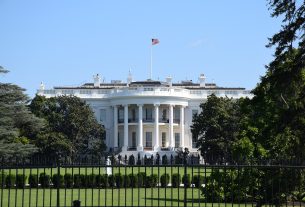Callie Cho and Robin Naidoo talk us through how, using observed animal movements rather than conventional resistance surface models, a connectivity conservation blueprint for African elephants in the Kavango-Zambezi transfrontier conservation area (KAZA) in southern Africa was produced. This is explored further in the new research article.
A key aspect of effective conservation management is understanding landscape connectivity—how easily animals can move between vital resource areas. While policy makers and researchers have increasingly begun to examine landscape connectivity, the conventional resistance modelling approach to assessing landscape connectivity has significant limitations, mostly due to small sample sizes and overextrapolation.
Conventional models, often based on limited data from a small part of the overall study area, account for connectivity using a single, broad-scale model for the entire landscape. This type of resistance modelling may miss important smaller areas that are crucial for daily or seasonal animal movements. On the other hand, assessing functional connectivity by observing animal movements can provide a more accurate picture of landscape connectivity, but the sample size of collared animals needed to do this is typically prohibitive.
So, how do we best measure landscape connectivity in instances where we do have a large amount of animal movement data? We aimed to answer this question by examining elephant movements in the world’s largest terrestrial trans frontier conservation area.
The test case: Elephant movement in KAZA
Spanning 520,000 km² across five countries, the Kavango-Zambezi trans frontier conservation area (KAZA) in southern Africa exemplifies the complex interplay between human needs and wildlife conservation.

Its diverse ecosystems, from savannahs to forests to wetlands, host about half – 227,000 – of Africa’s remaining savannah elephants (Loxodonta africana) and around 3 million people. This global conservation priority aims to balance protected areas, game reserves, and human settlements in a trans frontier landscape, presenting a unique challenge in managing human-wildlife coexistence.
Our study
Our goal with this research was to provide a robust picture of landscape connectivity for elephants in KAZA by using data on actual, observed animal movements. To do so, we assembled a database of around 4 million GPS observations from almost 300 collared elephants between 2009 and 2023; the single-largest elephant GPS tracking database ever assembled. Then, we assessed the way in which elephants use this landscape at 3 different scales:
- Micro-corridors: small-scale movement corridors.
- Inter-PA (protected area) pathways: important areas in KAZA that connect core protected areas.
- Macro-corridors: areas important for connectivity across the entire set of GPS-collared elephant movement trajectories.
We identified micro-corridors by examining elephant grid cell use, speed, and directionality thresholds in a set of well-studied micro-corridors in the Okavango panhandle region of Botswana. Applying these thresholds to elephant movement parameters in all 100-m grid cells in KAZA allowed us to map similar micro-corridors across the entire landscape.
Then, we mapped all elephant movement pathways that connected relevant pairs of protected areas. Lastly, to identify macro-corridors, we calculated betweenness centrality for each grid cell per elephant. This metric quantifies a cell’s importance as a movement conduit by measuring how often it lies on the shortest paths between other locations. Finally, we aggregated these scores across all pixels in KAZA to create a comprehensive map highlighting key areas of connectivity throughout the transfrontier landscape.
Our results
We found that anthropogenic factors influence elephant movement at both micro and inter-PA levels. Elephants utilize micro-corridors to access water, navigating through areas of human activity and altered landscapes such as fences, agricultural fields, and urban areas.
While inter-PA pathways varied extensively, human settlements also channeled these movements into specific corridors in certain parts of the landscape. For macro-corridors, there were important priorities identified both within and outside of protected areas, underscoring the crucial role that both protected and unprotected lands play in facilitating transboundary wildlife movement.
Perhaps most importantly, we found minimal overlap between connectivity priorities at different scales, underscoring the necessity of multi-scale movement analyses to inform comprehensive conservation strategies.
Takeaways
Our study utilized the largest database of elephant GPS data gathered to date and provided a movement-based conservation blueprint for elephant connectivity in KAZA. The KAZA governance structure provided a platform for data sharing and collaboration among disparate groups of researchers and highlights how collaborative research can amplify our power to conduct rigorous applied connectivity science.
Our results can be used to inform conservation policy and management and can be adapted to include more species in the future. Crucially, we found that connectivity priorities vary with scale, necessitating tailored assessments and conservation approaches at the different levels. As human-wildlife interactions intensify due to population growth and climate change, understanding the connectivity of shared landscapes like KAZA is vital for conflict mitigation and enhanced conservation.
Read the full article “Landscape connectivity for African elephants in the world’s largest transfrontier conservation area: a collaborative, multi-scalar assessment” in Journal of Applied Ecology.






